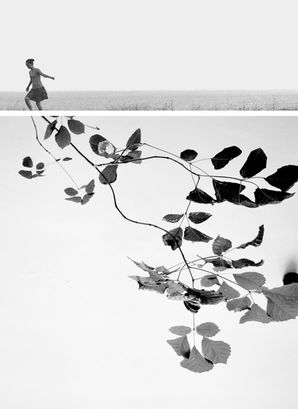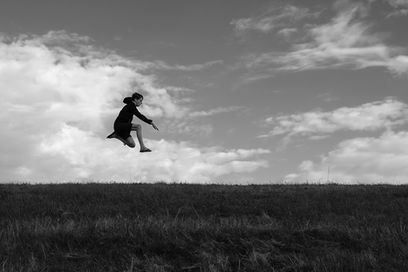
AROUND ANGELUS: The Poetry of Everyday Life
November 4, 2022
INTERVIEW
PHOTOGRAPHY Paolo Ricca
INTERVIEW Karen Ghostlaw Pomarico
Strangest things happen around the streets of Angelus. Children, men, women and the elderly of all ethnic groups and ages, are hurrying to reach the place where the religious event will take place, in thanksgiving for the mystery of the Incarnation. There is no better time to remember that you are a Christian. Every person, whether it is a tourist who passed there by chance, or an enthusiastic believer, gets carried away by the sounds and sensations of that atmosphere. The energy is palpable, it transpires strongly in the air and intoxicates passers-by, making them more docile and more meek. The light is warm, enveloping. Everything seems to be perfect, created ad hoc for the occasion. It is a day of celebration and, regardless of the knowledge of religions and local customs, the most important moment is not the event itself but rather what happens around it, the instants that precede it and define it in that atmosphere. only. This is how, in homage to childhood memories, I went back through the same streets I walked with my family when I went to St. Peter's Square to listen to the Angelus, the Catholic prayer that devotees recite every Sunday in thanksgiving for the mystery of the incarnation. The series, entitled 'The Poetry of Everyday Life', evokes an alien dimension that smells of a bubble, a protected and alternative environment in which everything, even the most banal, takes on a different connotation from normal. The subjects framed on the streets of the Angelus express the serenity that accompanies them in their faces and which, at times, takes the form of an extravagant representation. In this feast for the eyes, people move excitedly in a preserved space that appears as a small oasis within the chaos of the city. The camera goes unnoticed, because there, in that idyllic dimension, everything seems to be allowed. Screams and noises are the background to a potpourri of visual experiences, moments ready to be captured and told.

“AROUND ANGELUS evokes the sensations of a special day, the memory of a magical and timeless atmosphere. Fragments of a past future in which the protagonists, far from being contemporary citizens or time travelers, are the main actors of this eternal story: a continuous seduction, which tastes like a story and a spiritual journey to which no one, not even the strongest, can resist. Around the streets of the Angelus, adults and children let themselves be seduced by the poetry of everyday life.”
IN CONVERSATION WITH PAOLO RICCA
Born in Rome, Paolo Ricca is a freelance photographer based in Italy. Paolo graduated in advertising graphics and later breathed the atmosphere of inks working in an old printing shop. This is where he deepened his knowledge of the use of color that would later be chosen for the realisation of his projects. Today, through his intimate photographs, cancelling the distance between the subject and the observer, Paolo loves to tell stories and fragments of everyday life. Stories of humility and determination, looking into traditions to cultivate the roots of one's future that aim to take on a documentary and at the same time artistic value. The art of framing poetry of everyday life, this is photography, for Paolo.
THE PICTORIAL LIST: Paolo, The Angelus is unique to Rome, a thanksgiving for the mystery of the incarnation, when God became man, or Jesus Christ. This celebration of mortality is the inspiration for unification throughout the city. Describe for us what this means to the people of Rome, and why it is so contagious.
PAOLO RICCA: The capital is one of the oldest cities in the world, with a great architectural charm and rich cultural heritage. But it is also a difficult, hectic and rather chaotic metropolis, especially for all who were born and lives here from many years. In this scenario, the Vatican is a unique city-state, situated in the center of Rome, Italy, and represents the heart of Roman Catholic Church. Something changes while entering the boundary of this reality, everything seems better and good, even the people. So, the Angelus is a historical event that attracts everyone, adults and children, of all ethnic groups and ages.
TPL: Tell us more about the atmosphere around this magical event, how does your community prepare? You talk about the sensory perceptions that hypnotize and seduce the participants of the Angelus, are these foods that fill the air creating an unmistakable aroma that instantly brings you back to that specific moment in time? Are bells ringing? Music or hymns?
PR: Every Sunday is a day of celebration and, with the first light of sunrise, many people approach the place of the event. It's early morning and many people arrives directly by subway or bicycle. Few minutes after, also the full bus of tourists arrives in the streets of the Vatican. One, two, and more, Traffic becomes chaotic, some people have breakfast, others buy souvenirs, still others, with patience, are already waiting to goes St. Peter's Square.
Here, along streets of the Angelus, the atmosphere is magical. Air is crisp and you can almost touch it with your hands. The energy of street artists, the sound of the bells coming from one of the many churches nearly. Small improvised bazaars, with their souvenirs and freshly prepared foods, everything seems created to make unique this moment.
TPL: You talk about the serenity you find in the faces of the people you photograph, you mention their eyes. Can you explain to us what you think this serenity is and where it comes from?
PR: I think each of us has our own defects, vices and fragility, but it's often difficult to accept. Here, among the streets of the Angelus, people do not judge and everyone, like a liberation, becomes equal when compared to the greatness of everyday life. This is what makes everyone more serenity and free.
TPL: In this serenity, you have discovered the extravagance of feeling free to be oneself, and to celebrate mortality to the fullest. Tell us more about this transformation that takes place, the seduction.
PR: In many situations, even for unbelievers, Angelus represents a social event of aggregation brings everyone together, an opportunity to redeem themselves and, in some way, become better for at least one day.
TPL: What advice would you give to someone not familiar with Rome and the Angelus, on how to participate, and the best way to share in the experience?
PR: Most significant experience is not the event, important and already well known all over the world, but everything who happens around it. Here, everything, even it's most banal, if accepted with a free soul, unveils a different meaning from normal. So, you have to open your eyes and observe with the curiosity of a child, stay tuned with open heart.
TPL: Could you tell us what living in Rome has inspired in your work? What special qualities unique to the ‘Eternal City’ influence your both your street and documentary photography and the way you portray your community?
PR: Rome is a city of great beauty but also it comes a thousand contradictions, so, to understand it, I decided to explore it's most important and characterise themes: religious and cultural roots. First, the contrast between sacred and the profane emerges, two sides of the same coin that coexist on the border of a peaceful armistice that does not fear judgments and prejudices. Second, a lot traces of past are today present on the edge of the suburbs, where culture of fatigue still follows the ancIent gestures of one's own ancestors.
In the primary colors there is humility, determination and sacrifice; a human pulse, a crossroads to overcome, a hard climb, the solidarity between people, the difficult relationship between human beings, courage and love.

TPL: There is an intimacy with your subjects, an up close and personal engagement. Do you know your subjects? Please tell us about the candor you share with your subjects, and what this brings to your portraits.
PR: Happiness, fear and hope. As documentary photographer I need to explore emotions lived by the subjects I decided to follow. To do this, I talk them a lot and generally shoot little at start. I explore their activities and try to really understand their daily. I often immerse myself in their personality and this approach creates a special relationship which will then be fundamental during shooting.
TPL: Colour is an important thread in your work, tell us how you use your colour to create your photographic frame. The flash creates a shallow depth of field, could you explain to our readers why this is important to you in the way you create your imagery.
PR: 'The Poetry of Primary Colors', is the title of the cover image of my photographic project that pays tribute who work the land. In the primary colors there is humility, determination and sacrifice; a human pulse, a crossroads to overcome, a hard climb, the solidarity between people, the difficult relationship between human beings, courage and love.
I think the primary colors translates good the fragility of soul because are really raw and honest. Also, if light is good, I prefer to work with no flash because this allow me to express the authentic dignity of the subjects, and cancel the distance between subject and observer, I think. So, here is the passion of red, the hope of green, and the whiteness of blue. An authentic metaphor of life that comes out so honored.
TPL: What artists have inspired you in your photographic journey?
PR: I like to think my images aspire to take a documentary and artistic value, at the same time. So, as a documentary photographer, William Albert Allard and Michael Yamashita are my favorite photographers because their images capture the essence of a story through absolutely poetic language and a great light management. As street photographer, my favorite photographers are Fred Herzog, Harry Gruyaert and Alex Webb, for their great skill in composition and color management, but, mostly, for their ability to transform everyday life into art.
TPL: What equipment do you use that have become the tools of your trade? Anything on your Wishlist?
PR: I really started to focus on the essence of my projects when I decided to mainly use two fixed lenses. For documentary project and street photography, I mainly use the 28mm and sometimes the 35mm, for posed portraits and candid landscapes. More rarely I use flash, especially when the sun is strong and want to add more details in the shadows. My main camera is a compact, light and professional mirrorless. This is my main gear and I think it will be like that for a long time.
TPL: What projects do you have planned for the future, and what they should look forward to?
PR: I generally work on long term projects and spend a lot of time in searching and editorial contents. So, I would like to work soon on a dedicated project to the strength of elderly, they has really much to share and tell.
PR: “When I am not out photographing, I (like to)…
I love being with my family, listening to music and walking a lot. I love so much to explore a place by walking. This recharges my batteries."

Paolo Ricca is an inspiring freelance photographer from Italy who uses his knowledge of color and his intimate photographs to tell stories of everyday life. He has managed to bridge the gap between subject and observer and use his art to capture the poetry of everyday life. Through his work, we can witness the humility and determination of those he meets, while also cultivating the roots of our future. We invite you to join Paolo in this journey and discover the art of framing poetry of everyday life for yourself.











































